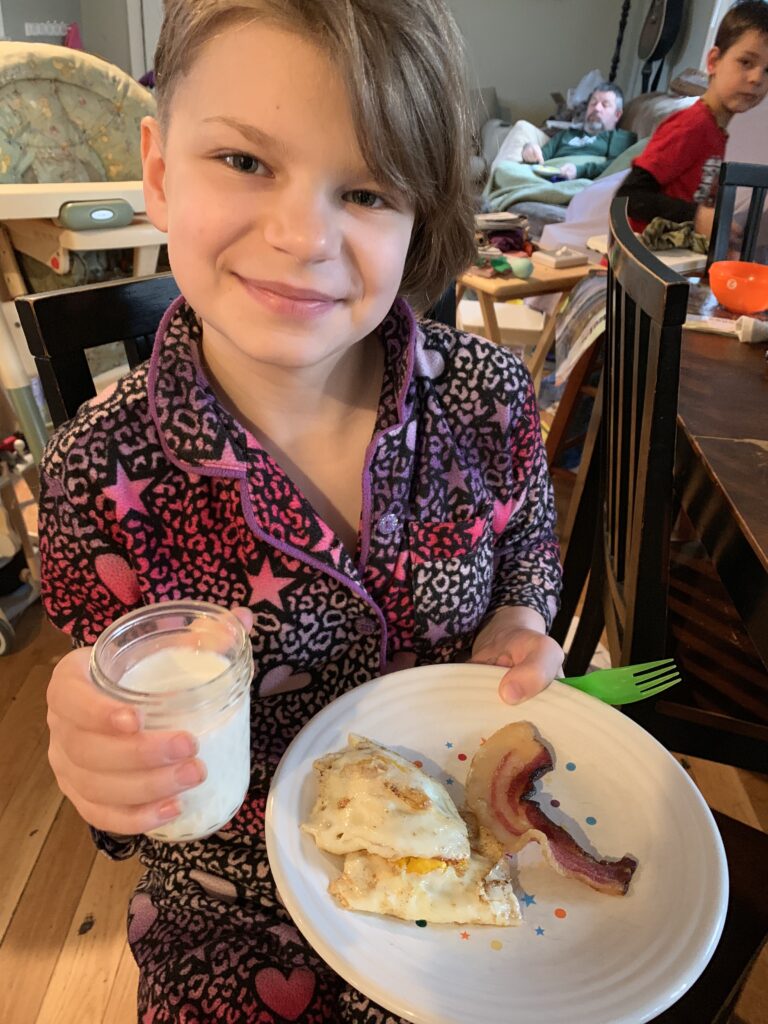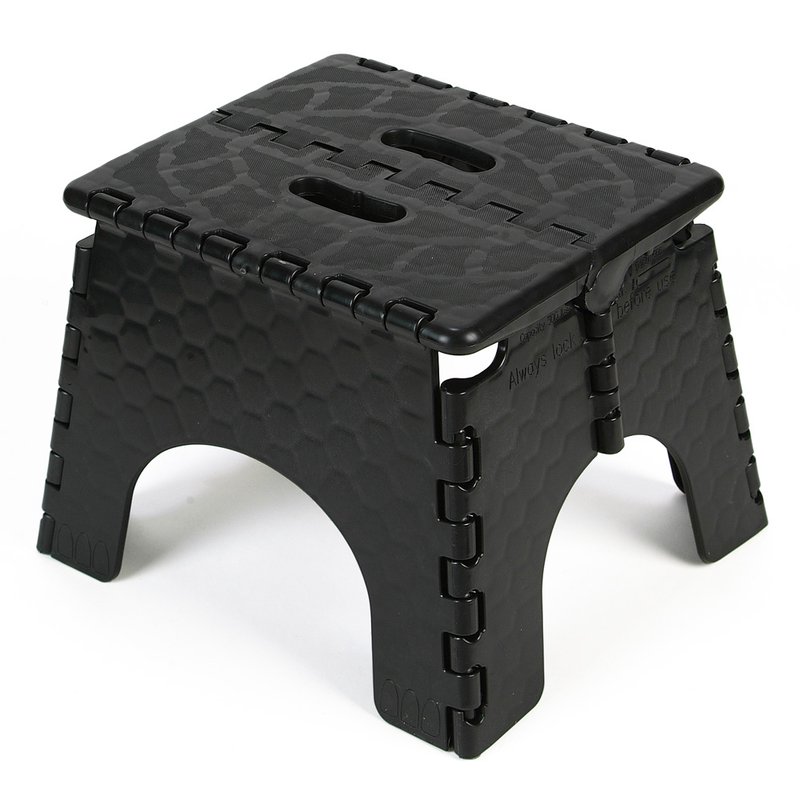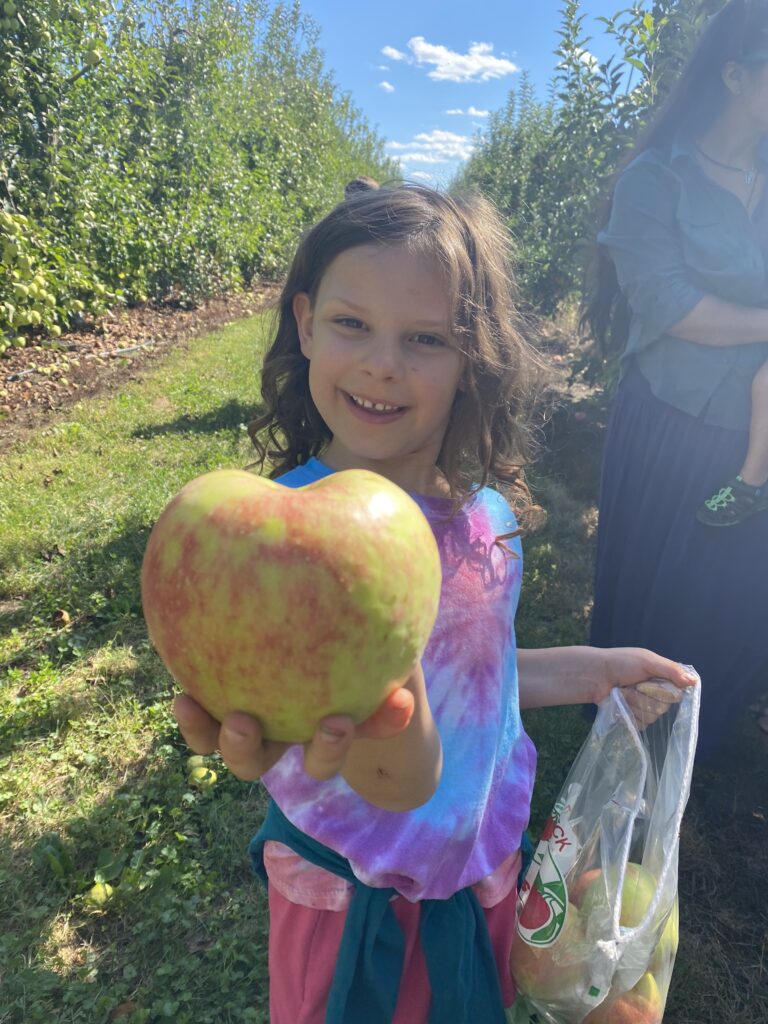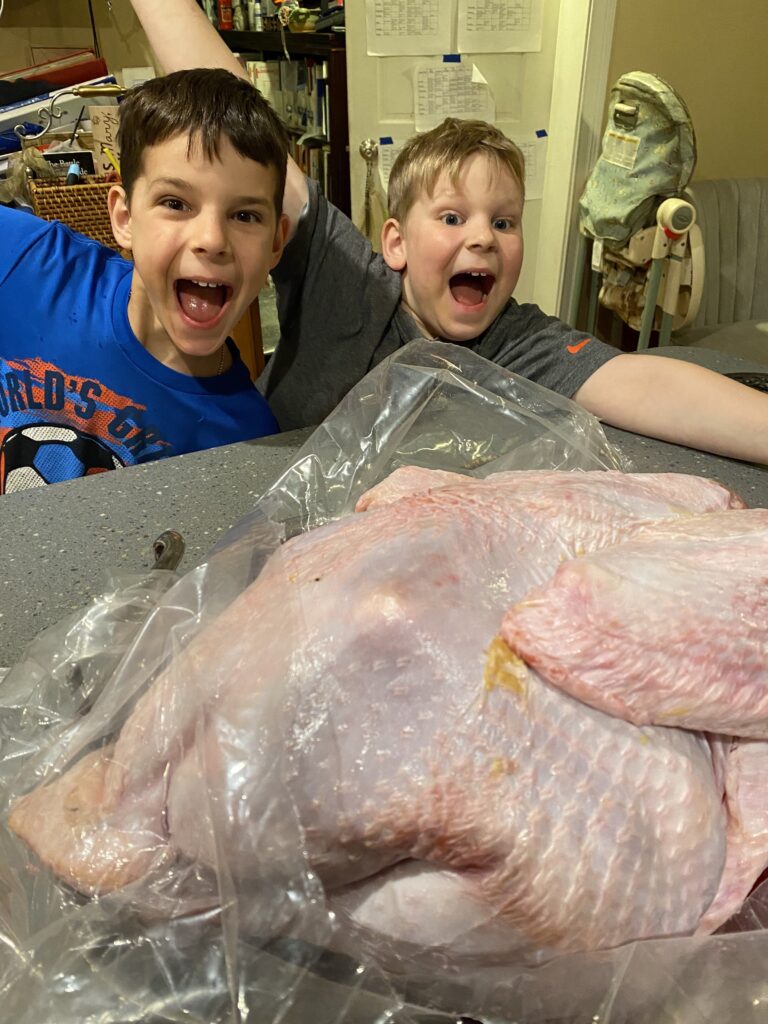Last time, we started a conversation about involving kids in the kitchen. If you missed it, you can read it here. When you get your kids involved, you will be able to see them beam with pride when they make even just part of the wonderful family dinner in front of you.
Then, here are my top 10 tips for getting kids involved in the kitchen:
- Create a job for them. If it’s a little child who really can’t chop veggies, they could wash them for you. Set them up at the sink with a pile of potatoes and let them just scrub that one potato within an inch of its life while you take care of the rest. Another idea is if you’re making bread for example, to give the child a small piece of the dough to knead themselves. They can always carry dishes to set the table or fill cups of water.
- Let them peel and cut. Get multiple vegetable peelers so that they can take their time peeling the first carrot while you whip through the rest. There are also fantastic starter knives for toddlers that will actually cut. Remember you’ll be right there with your child to talk about keeping fingers out of the way and keeping your eyes on what you’re cutting.
- Start small. Scrambled eggs, toast, or a kid-friendly charcuterie board are great first things for a kid to make. When we start, I allow kids to cook supervised on the stove, but I turn on and off the burner. Then they graduate to turning it on and off themselves. Next, they can prepare what goes in the oven, but I take it in and out. It isn’t until they’ve gotten quite a bit of experience that I let them take things out of a hot oven.

- Have them make a boxed muffin mix. Once a child can read, they can follow simple directions on a boxed mix. I like boxed mixes because they usually only need 2-4 other ingredients and there’s a little bit of measuring, but not a lot. You can practice fractions, reading, following directions, fine motor skills, all with very little chance for error.
- Let them wash dishes. Give them a tub of soapy water and let them wash silverware and plastic dishes. It’s a myth that small children have short attention spans. When it’s a task they care about and are interested in, they often stay focused for quite some time. If you put a towel on the floor, the tub on the towel and an art apron on the child, or better yet, just let them wash in their diaper, they will likely stay close and occupied nearby while you work.

A simple stepstool, like this folding one, helps children reach the sink with ease. Available at Lehmans.com or in Lehman’s retail store in Kidron, OH. - Give older kids actual responsibility for part of a meal. The first dish my daughter was wholly in charge of was cranberry sauce for Thanksgiving dinner. She started making it around age 7 or 8 and still makes it at 13. She considers herself an expert and she is the one who always makes it.
- Ask what they want for dinner. Of course, without guidance and boundaries, the requests could include candy, pizza, and soda every night. If you have some conversations about what’s healthy or if you tell them categories they need to fill that helps. For example, when one of the children makes lunch, they know they need protein, veggie, fruit, and a crunchy thing. That means they can have sandwiches with salami or peanut butter, carrots or cucumbers or salad, pretzels or veggie straws, and apples, blueberries, bananas, or whatever we have. That allows them to make some decisions, but I know we get a good plate of lunch at the end.
- Grow a garden. Kids love to play in the dirt. Teach them as you go about when you can plant in your area and how to know when something is ripe. Have them help you weed the garden and talk about what you can use things for as they come ripe. Honestly, summertime snacking from the garden is some of my kids’ favorite pastimes. I rarely get to eat the snap peas because the kids beat me to it!

- Raise meat chickens or know your farmer. My boys took over raising our meat birds this past year and we talk all the time about how it’s a bird they raised when we’re cooking. They even raised the Thanksgiving turkey! You can’t always raise your own food, but you can buy from a local farmer. If you don’t know where to start, go to some local farmers markets when they open up again. Even if there isn’t someone selling meat there, you can ask around and find someone who is! Social media is another great tool for finding a local farmer. Ask around and you’ll likely find someone closer than you think who raises pastured chicken, beef, lamb, or pork. Take your kids with you when you visit the farm or pick up your order.

- Share what they’ve done. At the dinner table, tell your spouse who made what. Have each child point out what they helped make. Let the child talk about what they did and how they did it. Make sure to thank them and let others hear you say it. Also tell them how yummy it is.
Remember to just breathe and start small. This isn’t about speed or even efficiency. It’s about learning, togetherness, and setting your kids up for future success. Kids are often more willing to eat something they’ve helped plan or grow. When they have ownership of the dish and are proud of their work. You telling others (when they can hear you) about it increases that pride and excitement about the next time to “bake some love into it.”

































This is all great advice. I have my great granddaughter over often. She is five and has been helping in the kitchen since she was three. Her first job was to make the “cross-cross” on the peanut butter cookies. Now she is helping bake bread. She gets to help knead it and last week she shaped all the dough balls for our dinner rolls. Last summer she help weed and pick tomatoes in our garden. She loves to help Mamaw and Papaw. She asks we never have to call her to help. She is right there.